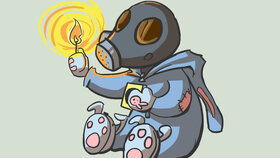
Understanding Various Types of Bug Bites
Bug bites can be a common occurrence, especially during the warmer months when insects are most active. Recognizing the different types of bug bites can help you determine the appropriate treatment and prevent future occurrences. In this article, we will delve into the various types of bug bites, their symptoms, and how to manage them effectively.
1. Mosquito Bites

Mosquito bites are perhaps the most well-known type of bug bite. These tiny, itchy red bumps are caused by the female mosquito’s need for blood to produce eggs. Here are some key points about mosquito bites:
-
Appearance: Small, red, itchy bumps that may appear in clusters.
-
Symptoms: Itching, redness, and swelling. In some cases, bites can become infected.
-
Treatment: Apply a cold compress to reduce swelling and itching. Over-the-counter antihistamines or hydrocortisone cream can help alleviate symptoms.
2. Bed Bug Bites

Bed bugs are small, flat, brown insects that feed on human blood. They are often found in beds, furniture, and other places where people sleep. Here’s what you need to know about bed bug bites:
-
Appearance: Small, red, itchy bumps that may appear in a line or cluster.
-
Symptoms: Itching, redness, and swelling. Bites can be mistaken for other types of bug bites or skin conditions.
-
Treatment: Clean the affected area with soap and water. Apply a cold compress to reduce swelling and itching. Over-the-counter antihistamines or hydrocortisone cream can help alleviate symptoms. In severe cases, consult a healthcare professional.
3. Bee and Wasp Bites

Bee and wasp bites can be painful and potentially dangerous. These insects sting to defend themselves or their nests. Here’s how to identify and treat these bites:
-
Appearance: Large, red, swollen areas with a central puncture mark.
-
Symptoms: Pain, swelling, redness, and itching. In some cases, bites can cause an allergic reaction or anaphylaxis, which is a medical emergency.
-
Treatment: Remove the stinger if it is still in the skin. Clean the area with soap and water. Apply a cold compress to reduce swelling and pain. Over-the-counter pain relievers can help alleviate symptoms. In severe cases, consult a healthcare professional.
4. Flea Bites
Flea bites are caused by fleas, small, wingless insects that feed on the blood of animals and humans. These bites can be quite itchy and may lead to an allergic reaction in some people. Here’s what you should know about flea bites:
-
Appearance: Small, red, itchy bumps that may appear in clusters.
-
Symptoms: Itching, redness, and swelling. In some cases, bites can become infected.
-
Treatment: Clean the affected area with soap and water. Apply a cold compress to reduce swelling and itching. Over-the-counter antihistamines or hydrocortisone cream can help alleviate symptoms. In severe cases, consult a healthcare professional.
5. Spider Bites
Spider bites can range from mild to severe, depending on the type of spider. Some spider bites are harmless, while others can be life-threatening. Here’s how to identify and treat spider bites:
-
Appearance: Redness, swelling, and pain around the bite area. In some cases, a necrotic area may form.
-
Symptoms: Pain, redness, swelling, and itching. In severe cases, symptoms may include fever, chills, and difficulty breathing.
-
Treatment: Clean the affected area with soap and water. Apply a cold compress to reduce swelling and pain. In mild cases, over-the-counter pain relievers and antihistamines can help. In severe cases, seek immediate medical attention.
6. Tick Bites
Tick bites can be







